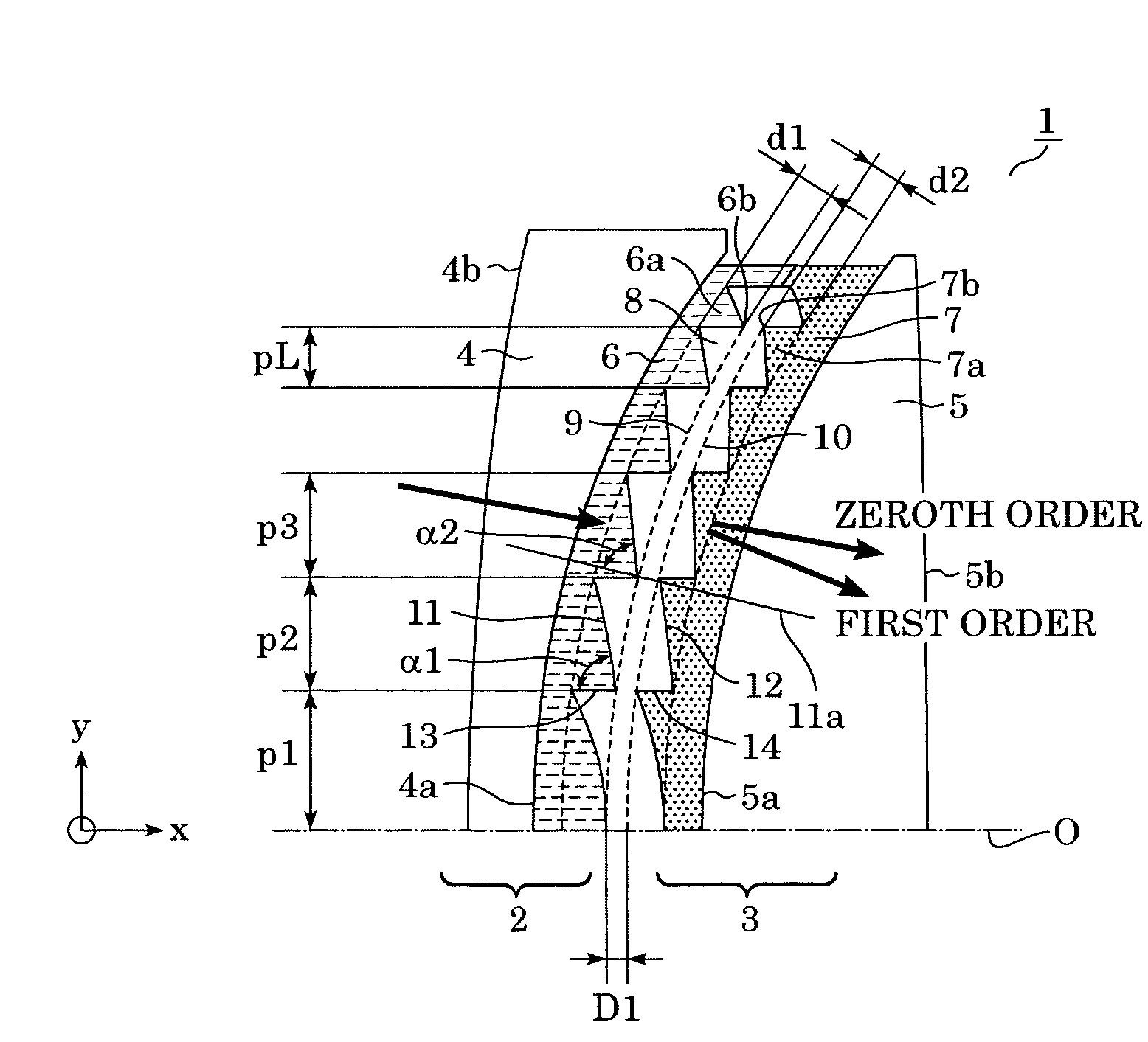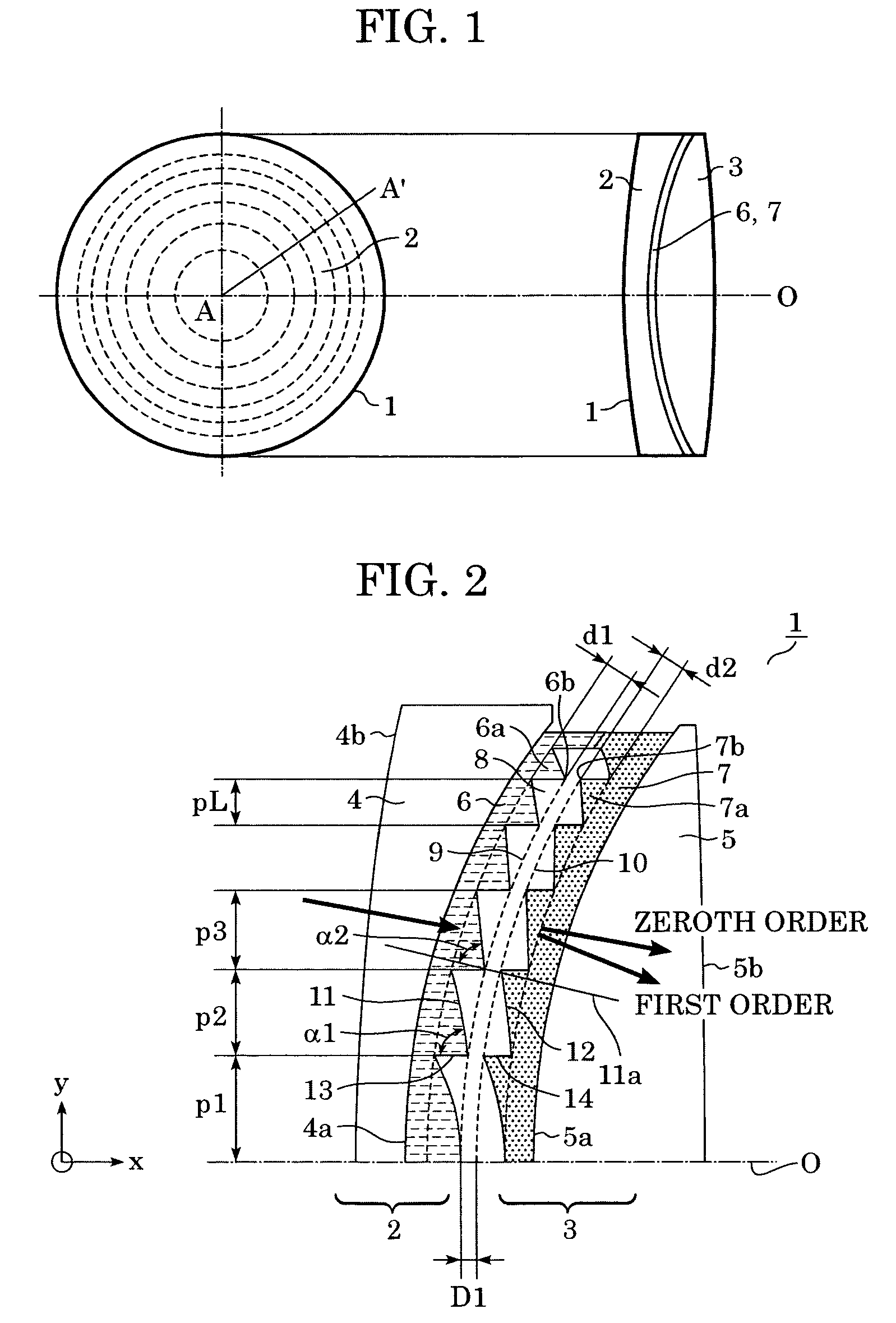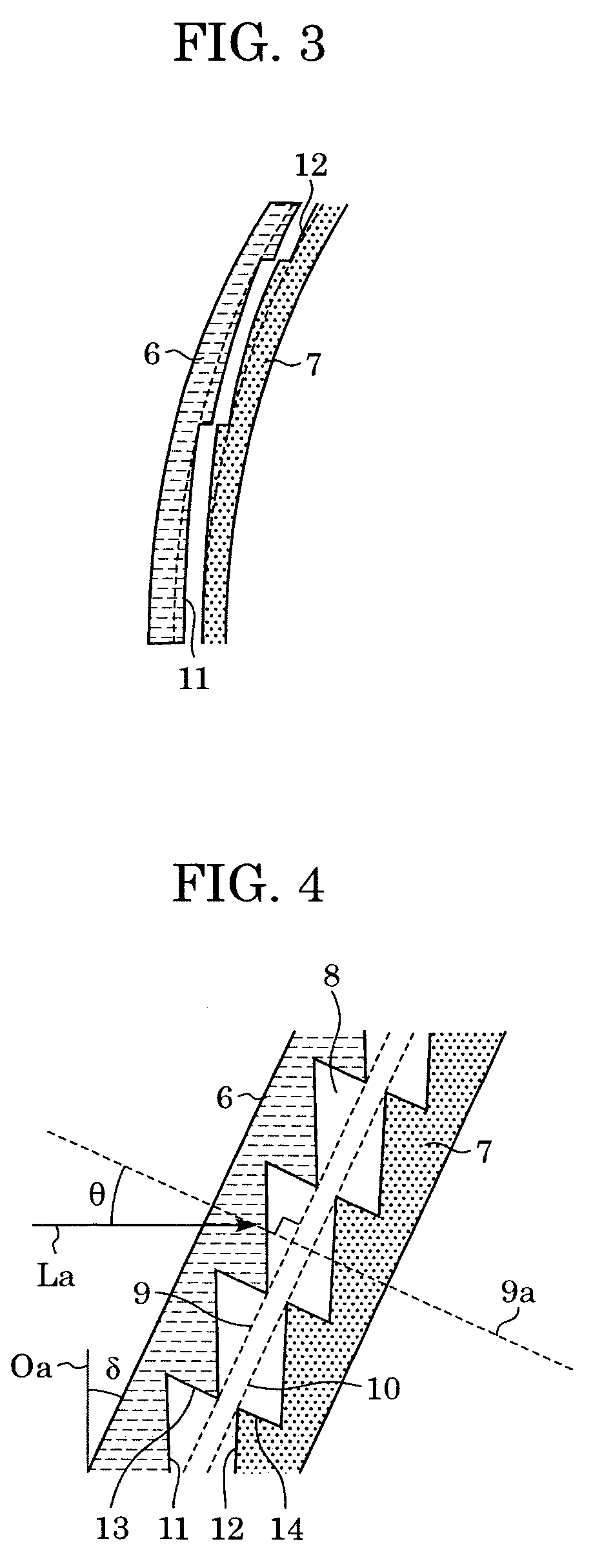Diffractive optical element and optical system including the same
a technology of optical elements and optical systems, applied in the field of diffractive optical elements, can solve the problems of low diffraction efficiency of envelope faces and decrease in diffraction efficiency for design orders, and achieve the effect of minimizing the decrease in diffraction efficiency
- Summary
- Abstract
- Description
- Claims
- Application Information
AI Technical Summary
Benefits of technology
Problems solved by technology
Method used
Image
Examples
first embodiment
[0052]A diffractive optical element 1 according to a first embodiment of the present invention is described below. FIG. 1 is a schematic view (including a front view and a side view) of the diffractive optical element 1 according to the first embodiment. The diffractive optical element 1 includes a first diffraction part 2 and a second diffraction part 3 disposed adjacent to each other (layered) with a distance D1 therebetween.
[0053]In FIG. 1, a first diffraction grating 6 and a second diffraction grating 7 have concentric grating parts and have a lens function (convergent or divergent function). The first diffraction grating 6 and the second diffraction grating 7 are formed on curved faces.
[0054]FIG. 2 partly shows the diffractive optical element 1 in cross section taken along line A-A′ of FIG. 1. For the sake of clarity, FIG. 2 is not drawn to scale, especially in the direction of depth of the gratings, and the shown number of the grating part is lower than the actual number.
[0055...
second embodiment
[0111]In the first embodiment, the layered diffractive optical element has the two diffraction gratings disposed adjacent to each other with the air layer therebetween. The diffractive optical element in the present invention is not limited to this structure, and can be applied to a layered diffractive optical element 1 shown in FIG. 10.
[0112]In the structure shown in FIG. 10, a second diffraction grating, as in the first embodiment, is disposed such that a second grating surface is disposed at the boundary of two different materials. A third diffraction grating 16 is disposed in a part of an air layer 8 in the second embodiment. Therefore, a face 10a opposite to a grating face of the third diffraction grating 16 is a curved face having a curvature substantially the same as each of the first envelope face 9 and the second envelope face 10.
[0113]In this case, a second grating surface 12 has a larger radius of curvature than that of the second envelope face 10, as with the case of the...
third embodiment
[0114]In the first and second embodiments, the first diffraction grating 6 and the second diffraction grating 7 are adjacent to each other. This structure requires that the relative positions of the two diffraction gratings be accurately determined.
[0115]In a third embodiment, as shown in FIG. 11, a first diffraction grating 6 is bonded to a second diffraction grating 7 with a bonding layer 18 at a part where a grating part is not formed. If the assembly operation up to bonding is conducted in a clean room, adherence of dust particles to a first grating surface 11 and a second grating surface 12 is largely reduced.
[0116]In addition, after the first grating surface 11 and the second grating surface 12 are bonded together, an operator or the like does not touch the first grating surface 11 and the second grating surface 12. Therefore, the workability of incorporation of the diffractive optical element 1 into another optical system is greatly improved.
PUM
 Login to View More
Login to View More Abstract
Description
Claims
Application Information
 Login to View More
Login to View More - R&D
- Intellectual Property
- Life Sciences
- Materials
- Tech Scout
- Unparalleled Data Quality
- Higher Quality Content
- 60% Fewer Hallucinations
Browse by: Latest US Patents, China's latest patents, Technical Efficacy Thesaurus, Application Domain, Technology Topic, Popular Technical Reports.
© 2025 PatSnap. All rights reserved.Legal|Privacy policy|Modern Slavery Act Transparency Statement|Sitemap|About US| Contact US: help@patsnap.com



